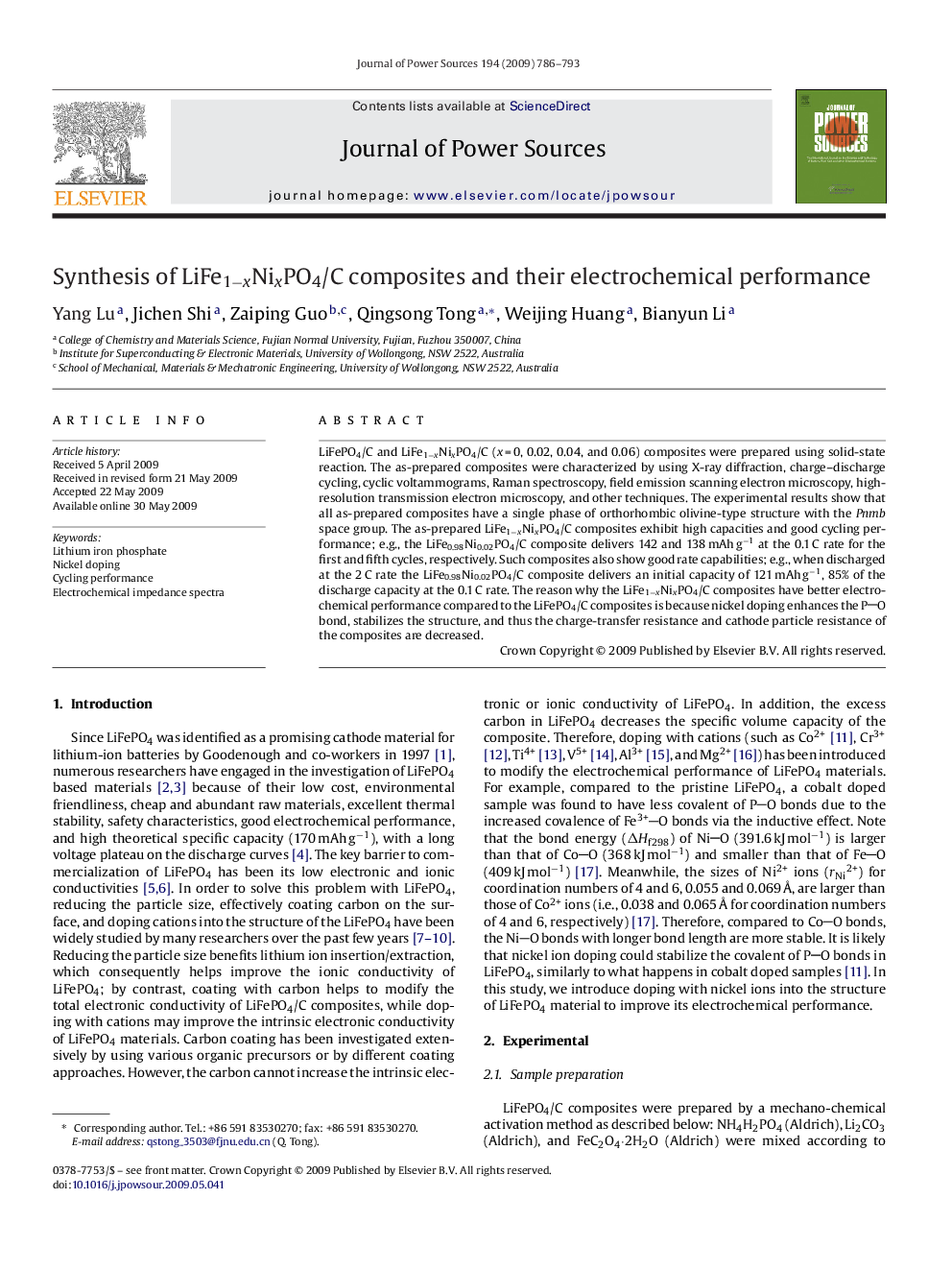| کد مقاله | کد نشریه | سال انتشار | مقاله انگلیسی | نسخه تمام متن |
|---|---|---|---|---|
| 1294027 | 973589 | 2009 | 8 صفحه PDF | دانلود رایگان |

LiFePO4/C and LiFe1−xNixPO4/C (x = 0, 0.02, 0.04, and 0.06) composites were prepared using solid-state reaction. The as-prepared composites were characterized by using X-ray diffraction, charge–discharge cycling, cyclic voltammograms, Raman spectroscopy, field emission scanning electron microscopy, high-resolution transmission electron microscopy, and other techniques. The experimental results show that all as-prepared composites have a single phase of orthorhombic olivine-type structure with the Pnmb space group. The as-prepared LiFe1−xNixPO4/C composites exhibit high capacities and good cycling performance; e.g., the LiFe0.98Ni0.02PO4/C composite delivers 142 and 138 mAh g−1 at the 0.1 C rate for the first and fifth cycles, respectively. Such composites also show good rate capabilities; e.g., when discharged at the 2 C rate the LiFe0.98Ni0.02PO4/C composite delivers an initial capacity of 121 mAh g−1, 85% of the discharge capacity at the 0.1 C rate. The reason why the LiFe1−xNixPO4/C composites have better electrochemical performance compared to the LiFePO4/C composites is because nickel doping enhances the PO bond, stabilizes the structure, and thus the charge-transfer resistance and cathode particle resistance of the composites are decreased.
Journal: Journal of Power Sources - Volume 194, Issue 2, 1 December 2009, Pages 786–793